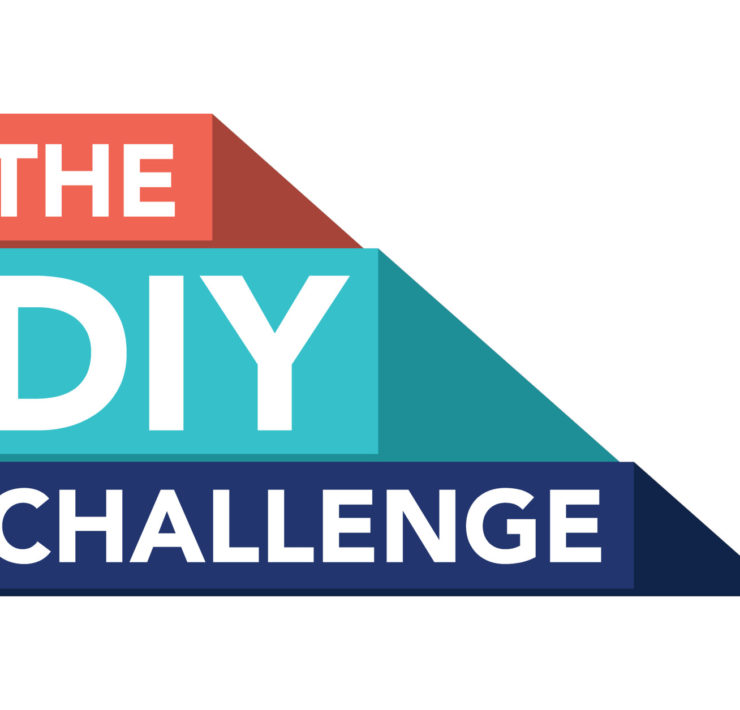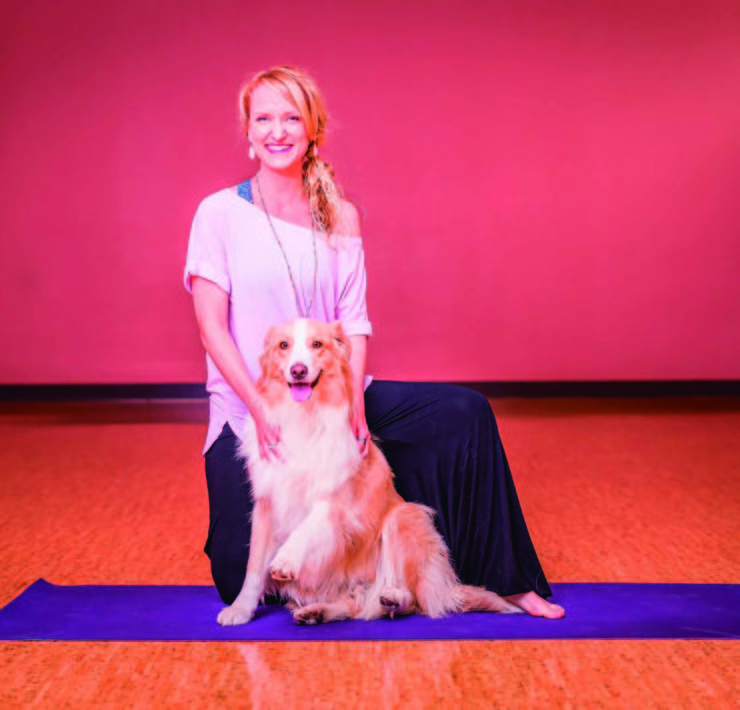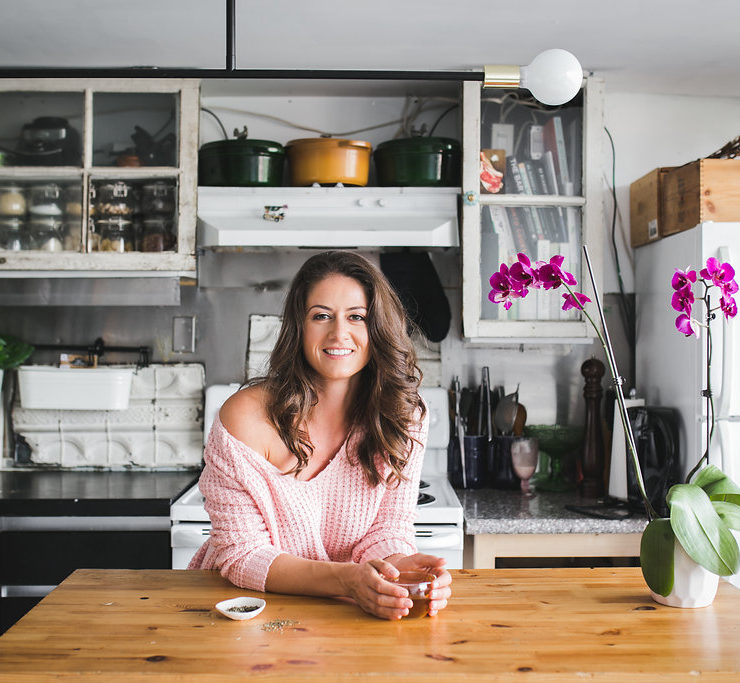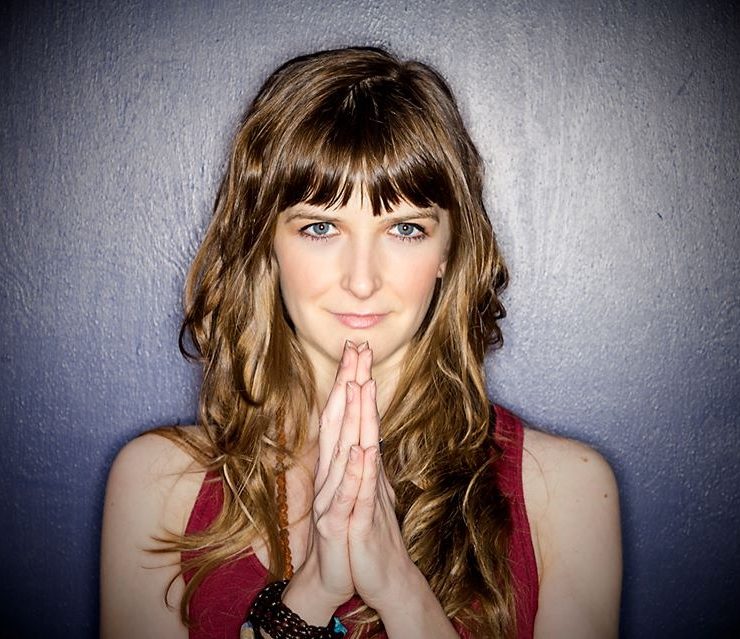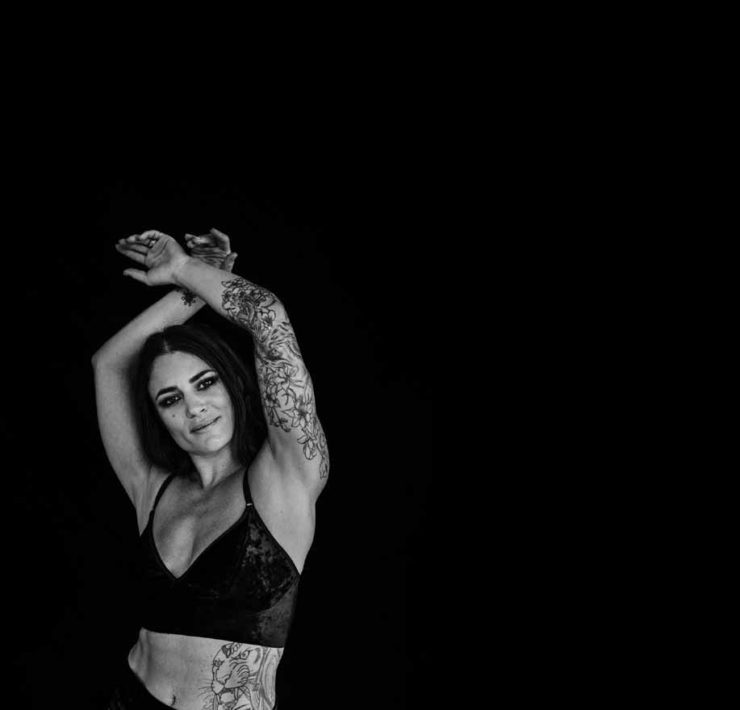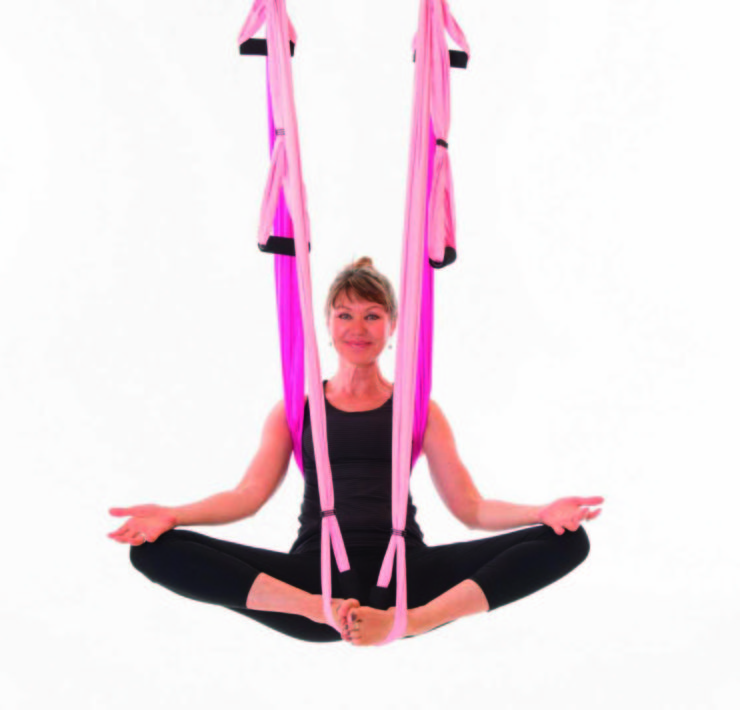Serving Up Diversity Faith Hunter on minorities, yoga, and the spice of life
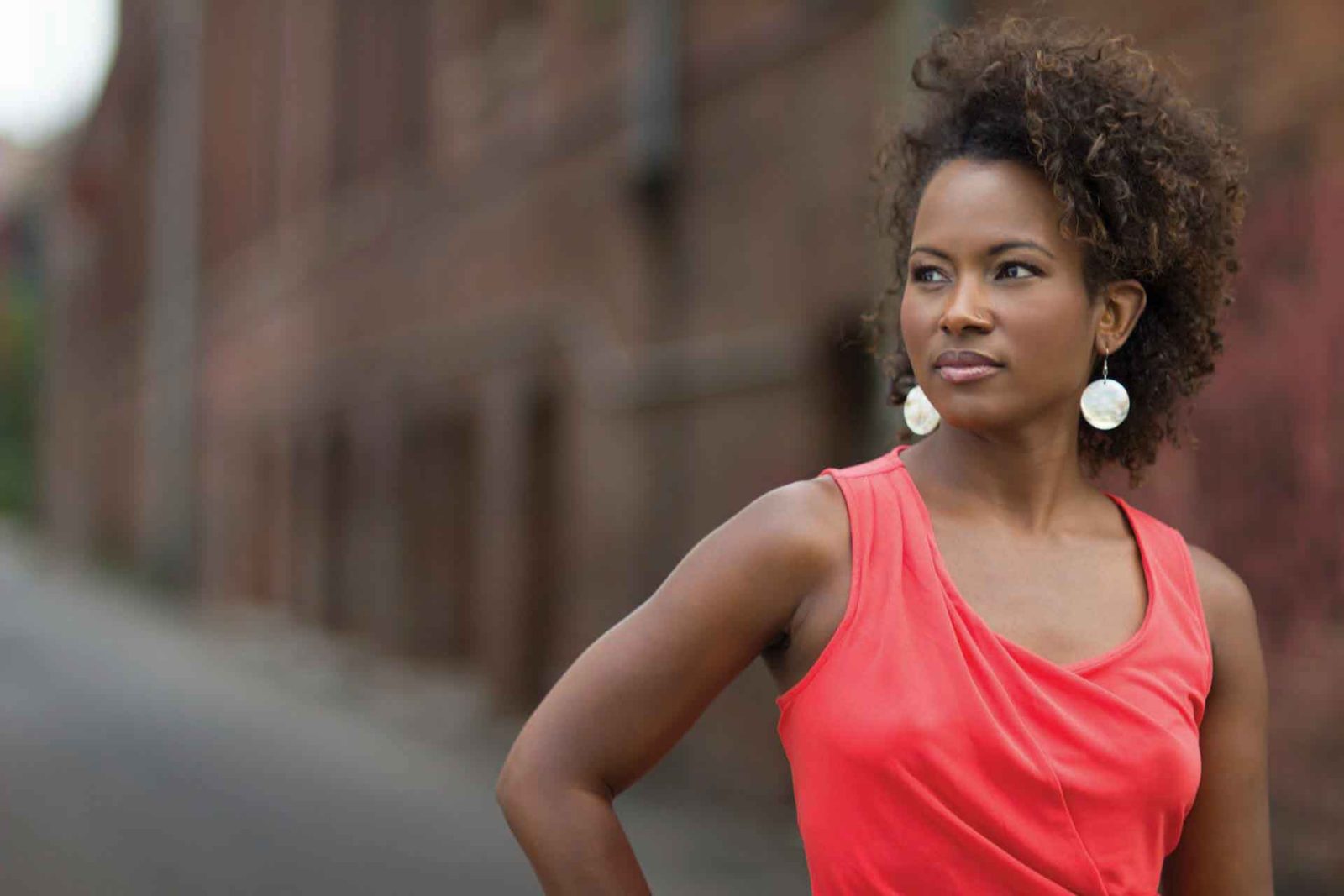
With a PhD in psychology from Yale University, Bonnie is…
Think back to the last yoga class you took (or taught). Did the bodies in the room represent all the flavours in your community—a palette of chocolate, caramel, and coffee mixed with vanilla? Or was it more like white rice, mashed potatoes, and Wonder Bread? Even in some of the least ethnically diverse areas of North America, there are minorities who could be practicing yoga but aren’t doing so. Ever wondered why? Faith Hunter has.
Hunter, who grew up in the cayenne-scented melting pot of Louisiana (and still misses the culture, the revelry, and the red beans and rice),is a prominent studio owner and yoga instructor in Washington, DC. Her form has graced the covers of the best-known yoga magazines, and she’s a popular conference presenter and teacher trainer. She spoke to Sweat Equity about her take on the benefits of yoga for all colours, shapes, and sizes and offered some tips that studios can use to make sure there’s something at the table for everyone who comes to partake of the yoga feast.
“There’s a great need and there’s an opportunity for us as a whole to come together and enjoy, to create a sense of peace through this practice, regardless of our race. I want to share this gift with everybody.”
Hunter’s studio, which she describes as “a Vinyasa-inspired yoga loft,” sits in the heart of DC—arguably one of the most racially and ethnically diverse places on earth. But Hunter says she feels at home wherever she goes, whether the people in the room look like her or not.

“I’ve never entered a studio or yoga class where I didn’t feel it was inclusive, and I think part of that has to do with the way that I was brought up. I’ve always been in and out of different types of environments. So even just the way that my parents encouraged me to mingle and socialize and connect with other people from a variety of races gave me the ability and the skill as an adult to always feel comfortable wherever I show up. So I’ve always felt very comfortable in my brown skin. It didn’t matter if I was the only person of colour in the room; I knew exactly what I was there for. So there wasn’t a place of feeling excluded.”
But there’s more to say about it, she notes. There certainly are many times when Hunter enters a yoga studio, as a student or as a teacher, and notices that she is the only person of colour. It has never made her feel uncomfortable,she says, and she didn’t even think it was necessarily a bad thing—just odd. “It was almost like this sigh of ‘why?’”
Having come to yoga, as many do, during a stress-filled period in her life, she knew that it was much more than a set of poses. In the early 90s, with her older brother dying of AIDS, her own coping abilities stretched thin with grief and the shared responsibility for his care, she finally gave in to a girlfriend’s urging to attenda yoga class. “That [class] was one of the first times in my life . . . there was a switch that went on—a light bulb, kind of—that said, ‘It’s okay. It’s okay to be you. It’s okay to take care of you, and it’s okay to cry.’” She’d been staying strong for the rest of the family, denying her own needs in favour of keeping it together at all costs. It was hard to imagine how a bunch of odd poses with Sanskrit names could help.

“After that first class, I think I was hooked, because I knew that I could show up every single week, even if I couldn’t do all the poses . . . the one thing that I was doing was breathing and being in the present moment, and that was going to be my process.”
As she continued to attend classes and delve deeper into her practice, yoga and meditation became the constants in her life, through her brother’s death, several stormy relationships, and jobs that never fuelled her inner passion. “I knew that I could get on my yoga mat and not necessarily find the answer, but what I could do was reconnect with me.” What many people (minorities or otherwise) don’t necessarily understand about yoga, says Hunter, and something she still emphasizes to her own students some 13 years later, is that rather than helping them “find something,” it is a way to reconnect to the sense of wonder, excitement, and joy of simply celebrating who they are.
So for Hunter, and for many would-be yogis of all colours, a basic misunderstanding of what yoga is can be a barrier to getting that first taste. She’s quick to dispel the common assumption that yoga simply doesn’t appeal to people of colour, orthat there’s something inherently “non-black” about doing it. “That’s just a stereotype,” she insists. “They do yoga. They show up to my studio.” Nor is economics a minority-specific barrier. She notes that despite the perception some may have that yoga is only for rich (white) people, most successful studios offer community outreach in the form of classes that are either free or on a sliding fee scale. Hunter adds that a work exchange program and scholarships for classes and teacher training are other ways to make yoga more accessible. Studios can also offer yoga in underserved communities as an act of seva, or selfless service. It is the responsibility of studio owners, says Hunter, to do what they can to ensure that money isn’t a major roadblock in anyone’s path to yoga.
There is, she notes, one objection that may come up more often among black yogis-to-be, and it has to do with yoga’s spiritual trappings.

Hindu hangups?
There’s one funny thing about yoga that simply doesn’t come up in other classes that involve physical exercise: newcomers can wonder whether they stumbled into a church service. Their hands return again and again to a home position called “Prayer Pose,” silent moments encourage them to contemplate the divine, chants and aspirations are recited fervently by the devoted, and (sometimes) there are references to a holy book called the Bhagavad Gita. Who could be blamed for thinking that yoga is a religion, and an exotic one at that?
Hunter acknowledges that stereotypes about yoga exist in the African-American community as well. “I had to deal with this, even with my own mother, when I started practicing yoga,” she remembers. When she told her mother about her joy in discovering yoga, “her first and immediate response was, ‘Are you no longer Christian?’ I had to pull back and go, ‘Hold on; that’s not what we’re talking about.’” She explained that yoga was not a religion, but had actually helped her reconnect to her spirituality. She adds that teachers who represent minority groups have a responsibility to explain what yoga is and what it isn’t.
One yoga, palatable to all
There’s another reason that ethnic minorities can be reluctant to try yoga, and (again) it’s a barrier that’s not unique to minorities: general apprehension about not being “yoga material.” Hunter says she’s heard friends say it’s way more than being the only person of colour in the room. Some don’t think they should join in until they can touch their toes,or feel that extra curves aren’t consistent with the yoga body. So at the top of the list of Hunter’s prescription for an inclusive yoga experience is meeting students exactly as they are, at whatever level of knowledge, fitness, or doubt they may have. “You’re welcome to show up in any form and in any way” is a mantra she takes to heart. The ability to share this welcoming energy with everyone is paramount to attracting the range of students who can benefit from yoga.
An easy recipe for inclusivity: curb appeal
The first stop for many who are curious about yoga is a studio’s website, and here, Hunter says, is an excellent opportunity to practice inclusivity. The simple psychology of social behaviour is that we seek to be with those we perceive to be similar to ourselves. So, Hunter advises, if studio owners want a clientele that resembles the diversity of their communities, they need to be sure their websites and other visual materials include members of all community groups. This is true not only for racial and ethnic groups, but other groups that can feel marginalized in yoga classes, such as less physically fit individuals, men, or older participants.
“The images that are on my website, [and] the people who take classes at my studio are reflective of the community. Being able to ensure that I project that as a yoga studio owner and as a teacher—in my words, in the way that I make people feel, and in my images—I think will help people feel a little bit more comfortable. Yoga offers us more than asana practice. It offers us the tools of meditation, which will help calm the mind and ease the spirit.” She adds that breath practice is also valuable, in particular for making people aware of how shallowthey breathe when under stress, and how proper breathing can be an antidote to the scattered-brainphenomenon affectionately known as “monkey mind.” She notes that before learning the breath practices of pranayama, meditation just wasn’t possible for her.
Planting seeds—outreach efforts bear fruit
“When you see the changes and shifts that have happened in our lives and all of the medicinal benefits that occur, it’s kind of hard to say that [yoga’s] not right for our communities.” Hunter puts that belief into action by volunteering forseveral outreach efforts in her community. She led demos at this year’s Afropunk Fest (which the New York Times calls “the most multicultural festival in the US”). She gives her time and talent to African-American community and cultural centres, churches, and schools. And she’d like to see yoga-related businesses take up the effort to spread the good word by marketing more to people of colour.
To that end, she’s agreed to be a spokesperson for a new group of women-specific stores created by Foot Locker. The stores, dubbed “602,” are not yoga-specific, but are geared to women who pursue healthy, active lives. Hunter represents the yoga lifestyle, and three other ambassadors will be the faces of other activities like running, spinning, and cross-training. The stores’ goal fits well with Hunter’s: to bring the yoga experience to those who haven’t yet tried it.
Everybody’s invited to the table, and in Hunter’s view, yoga is in a unique position to unite us. “There’s a great need and there’s an opportunity for us as a whole to come together and enjoy, to create a sense of peace through this practice, regardless of our race. I want to share this gift with everybody.”
What's Your Reaction?
With a PhD in psychology from Yale University, Bonnie is on a mission to find the best insights that the field has to offer and to share them with the world. Her online courses, Life Beyond Fear blog, and guided meditations at DrBonnieLynch.com bring you the very best that psychology and related disciplines have to offer in plain English, and ready to use!




